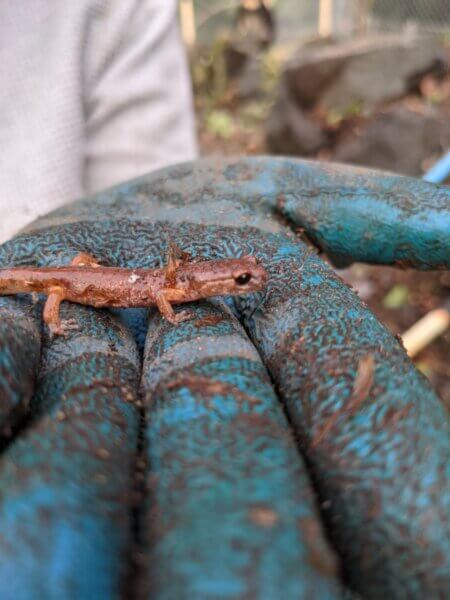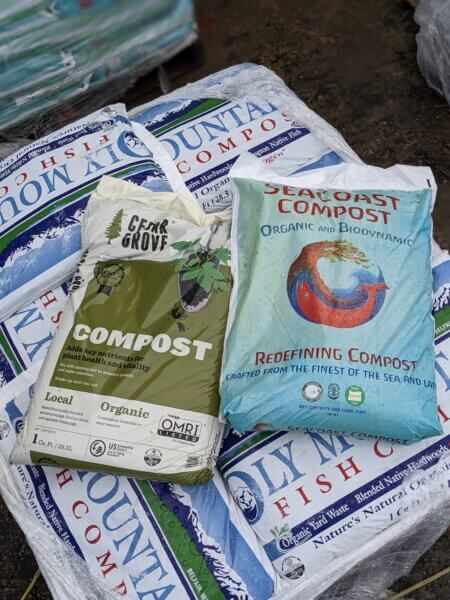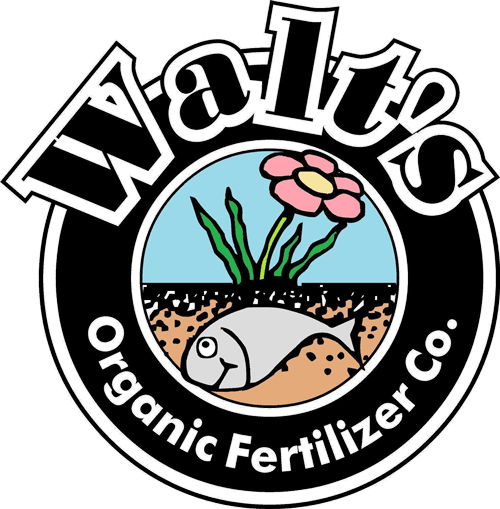Spring has finally arrived! With longer days and slightly warmer temperatures, its time to dig into your garden. Here are the next three ideas to make your 2022 garden fabulous.
For ideas #1-3 – See Part 1 of this Blog Series
Idea #4 – Garden for Wildlife
Our gardens are nature, and no matter how hard we try to control them, nature will do what it wants. Instead of battling pests and destroying weeds, consider working with nature. Each plant species has an “original” home, a place where it came into existence. Over centuries and even millennia, plants have spread to new places, sometimes by chance, sometimes on purpose. Native plants are plants that have been growing in a specific place for long enough that they are part of the local ecosystem. This means that other plants and animals depend on them and they need that ecosystem to thrive. Some plants are native to only a tiny space, such as an island, while others are native to vast regions.

City of Seattle Salamander
Humans are part of nature too, but we also tend to alter ecosystems.
While a garden full of tea roses, lavender, and rosemary may be a paradise for certain pollinators, it also does not provide food or shelter for many native animals. This year, try incorporating more native plants into your garden. Native plants are often overlooked and not considered as beautiful as plants from other places, but that is far from true. The mock-orange native to the pacific northwest, Philadelphus lewisii, is a shrub decked out with white blossoms in early summer with a fragrance that will make you swoon. The bold tiger lily (Lilium columbianum) looks like it is straight out of a fairytale, and red huckleberry (Vaccinium parvifolium) is a delightful treat to nibble on.
Planting natives in your garden reconnects it to the area’s native ecosystem and invites wildlife such as birds, pollinators, and amphibians to live there. You can plant species to attract specific animals, such as Black Hawthorn (Crataegus douglasii) for cedar waxwings (Bombycilla cedrorum) or incense cedar (Calocedrus decurrens) for red squirrels (Tamiasciurus hudsonicus). Alternatively, you can plant natives for other reasons and see what wildlife shows up. The more diversity you have among plantings, the more complex your garden habitat will be.
Some fantastic resources for PNW native plants and animals are:
Audubon Native Plants Database (a national resource)
Burke Museum Native Plant & Animal Identification
King County Native Plant Guide
Washington Native Plant Society Gardening with Natives
Idea #5 – Become a Master
The more time you spend in your garden, the more you will learn through experience, but to give your gardening knowledge a big boost, consider taking a class. Many organizations offer single classes or a series of masterclasses. Taking classes lets you connect with other people with similar interests, answer your tough gardening questions, and learn about the nuances of gardening in your region. While many of these classes are currently online, some are starting to go back to in-person.
Organizations to help you become a gardening guru:
Bellevue Botanical Garden – Classes, Webinars, and Lectures
Cascade Water Alliance – Gardening Classes
City Fruit – Master Fruit Tree Steward Program
King County – Master Gardener Program
Plant Amnesty – Pruning Classes and Workshops
Saving Water Partnership – Gardening Classes
Tilth Alliance – Master Composter/Sustainability Steward Program and Gardening, Beekeeping, and Chicken Keeping Classes
UW Botanic Gardens – Gardening/Plant Classes and Workshops
WSU Extension – Master Gardener Program
Idea #6 – Get Composting
Whether your local utility service picks up yard and food waste or not, you can embrace composting. There are various composting systems that you can DIY or buy to compost your organic matter in your yard. If your space is too small or you’re not ready for that level of gardening commitment, you can always buy compost to make your garden happy.

Ready to use bags of quality composts.
Compost can act as a mulch to suppress weed growth, but it also adds nutrients back into the soil. Adding compost to your garden beds in early spring. This allows the nutrients time to reach the roots just as they are needing them for summer growth. Our garden shop sells Cedar Grove, Tueful, SeaCoast, and Oly Mountain compost, and we are happy to help you figure out what is best for your beds.
Gardening is good for our physical and mental health but can also be beneficial to the world. If you have questions about gardening for wildlife stop by the garden shop and we can help you out. You c
an also stop by the shop to check out our new native plants and veggie starts!